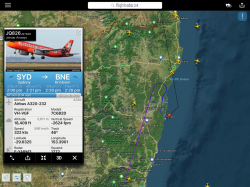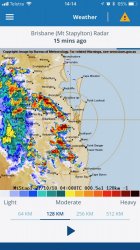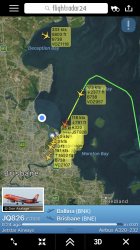Ah...the "splash and dash". That's one of those throw away lines, that refers to a particular type of diversion...which isn't applicable in about 90% of cases. Generally, it comes up on long flights (for instance LAX-MEL), where you are unable to carry the required fuel for Melbourne. You could press as far as possible, before admitting defeat and returning to Sydney, or (if really lucky) having the requirements disappear and continuing to destination. It's a game of odds...what is the likelihood of either outcome? If you consider the diversion option to be the most likely outcome, you could, early in the flight, increase the speed to the max. Fuel consumption won't be an issue, because you are making your destination Brisbane. Call ahead, get everyone ready to turn the aircraft around as quickly as possible.... You could be in, and out, in about 30-40 minutes. You will still be late in Melbourne, but way better than the return to Sydney option.
To be legal for a flight, you have to carry any fuel that is both normally carried, and any extra required by weather or NOTAMs. That may mean holding fuel, or diversion fuel. Companies go to great lengths to find ways of carrying as little as possible, whilst being legal. The trouble is that being legal, and carrying a sensible amount of fuel aren't often the same. In this case, a look at the weather would have most pilots loading both fuel for an alternate, and also for substantial holding. You just know that you'll be held even if you aren't directly affected by the weather....and you'll need to keep that alternate fuel in the tanks. But, company dispatchers will simply give you what is legal...and if you suddenly need 60 minutes on top of that, then too bad.

















